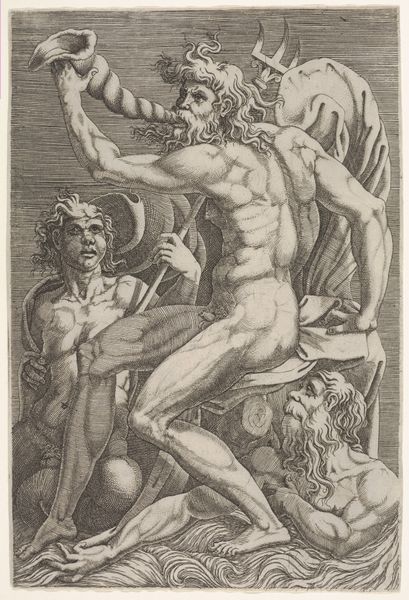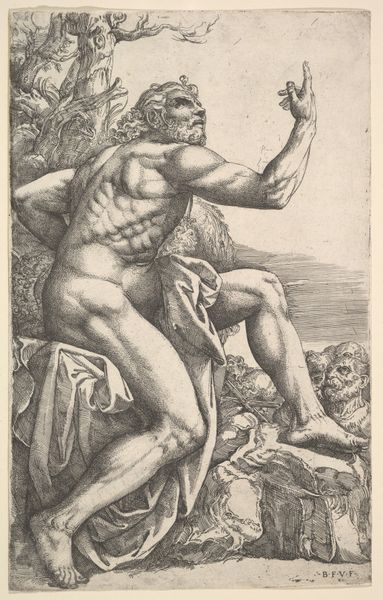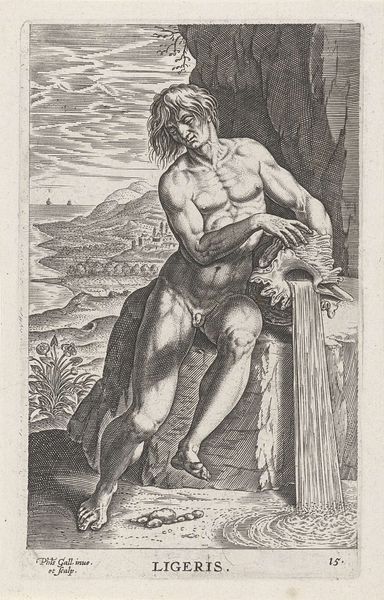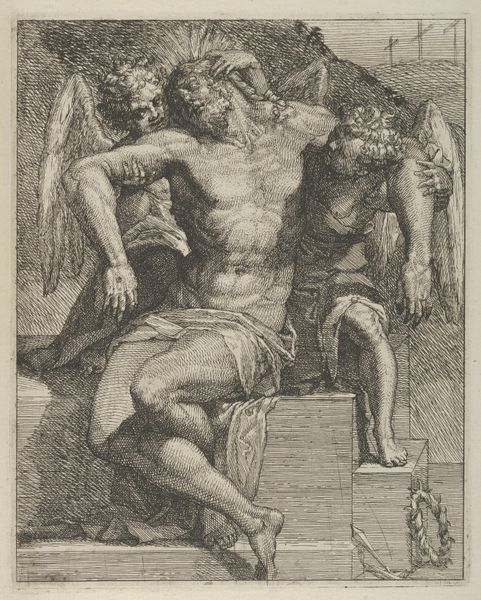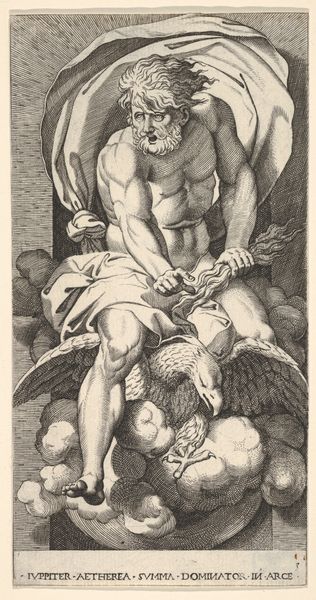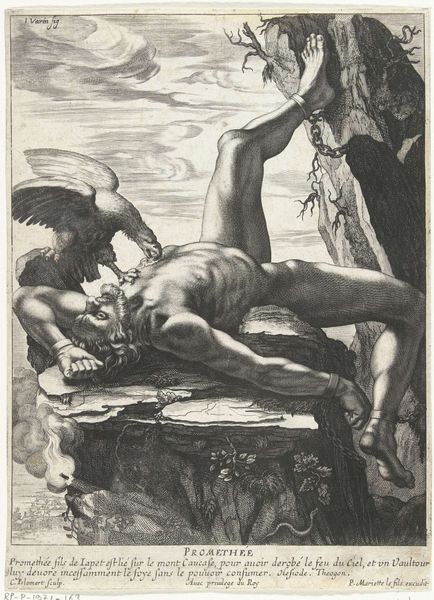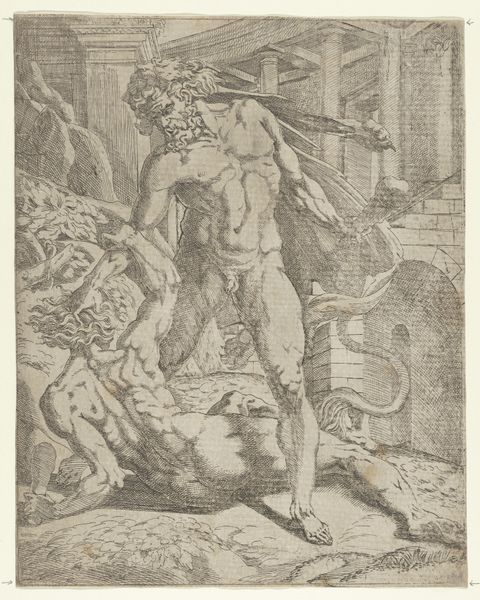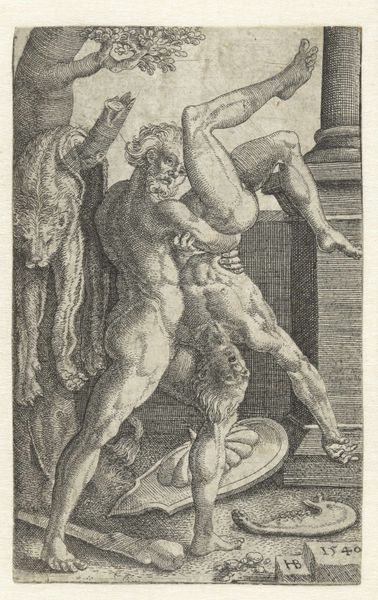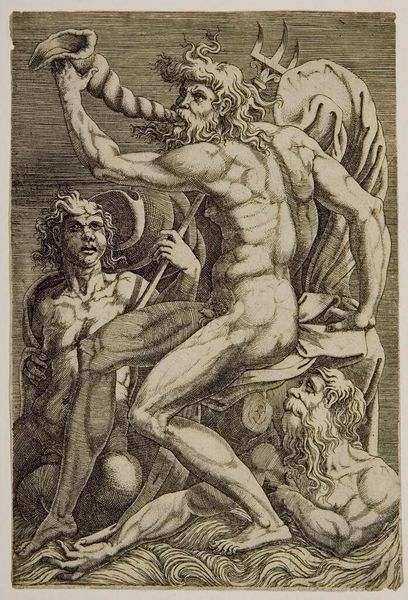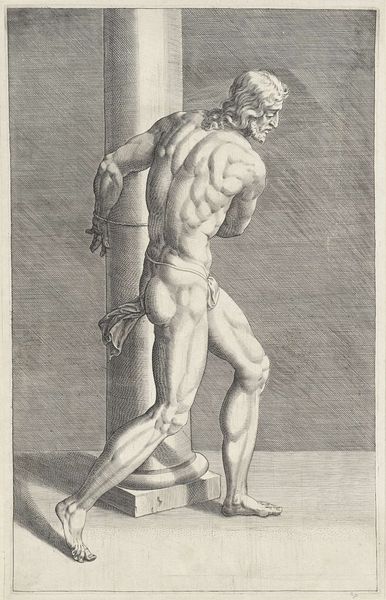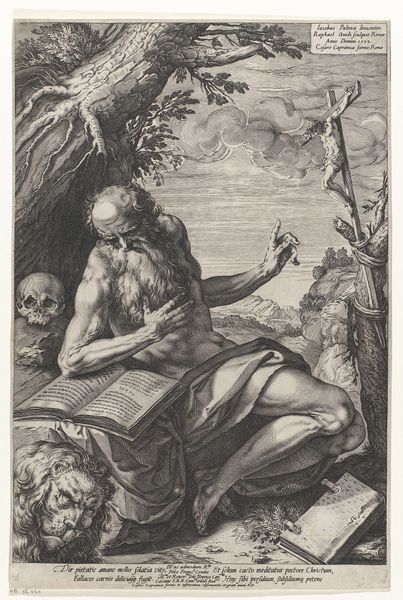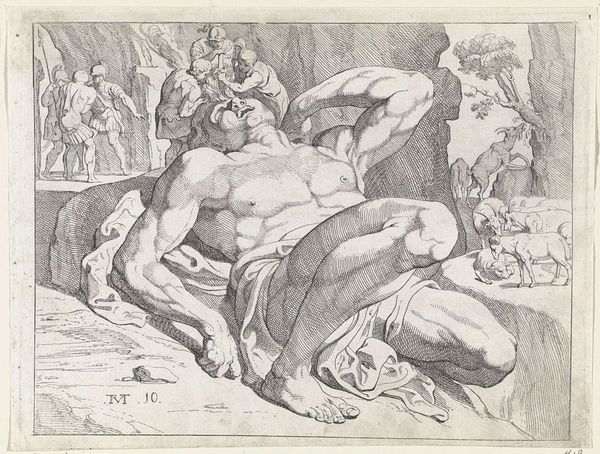
Plate 7: the blinded Polyphemus, guarding the entrance of his cavern, with Ulysses and his companions escaping below by covering themselves with ram skins 1756
0:00
0:00
drawing, print, engraving
#
drawing
#
narrative-art
#
baroque
# print
#
classical-realism
#
figuration
#
history-painting
#
engraving
Dimensions: Sheet (Trimmed): 16 1/16 × 7 1/2 in. (40.8 × 19.1 cm)
Copyright: Public Domain
This print of “Plate 7: The Blinded Polyphemus” was created in the 1700s by Bartolomeo Crivellari. The scene is dominated by the massive, muscular figure of Polyphemus, rendered in stark black and white. His contorted pose and agonized expression fill the viewer with an immediate sense of drama and raw emotion. The composition uses strong diagonals and a clear contrast between light and shadow to enhance the visual impact, drawing our eyes to the story's climax. The figures of Ulysses and his companions are small in comparison, highlighting their vulnerability against the monstrous cyclops. Crivellari employs a semiotic system of visual signs to deepen the narrative. The rough textures and exaggerated musculature of Polyphemus signify his brute strength and savagery, qualities set against the smooth lines depicting Ulysses' clever escape. This contrast underlines a broader theme: the triumph of intellect over brute force. The work destabilizes the classical ideal of heroism, suggesting that cunning and deceit can be as effective as strength. The image serves as a point for ongoing discussion about power, vulnerability, and the shifting nature of heroism within Western culture.
Comments
No comments
Be the first to comment and join the conversation on the ultimate creative platform.
